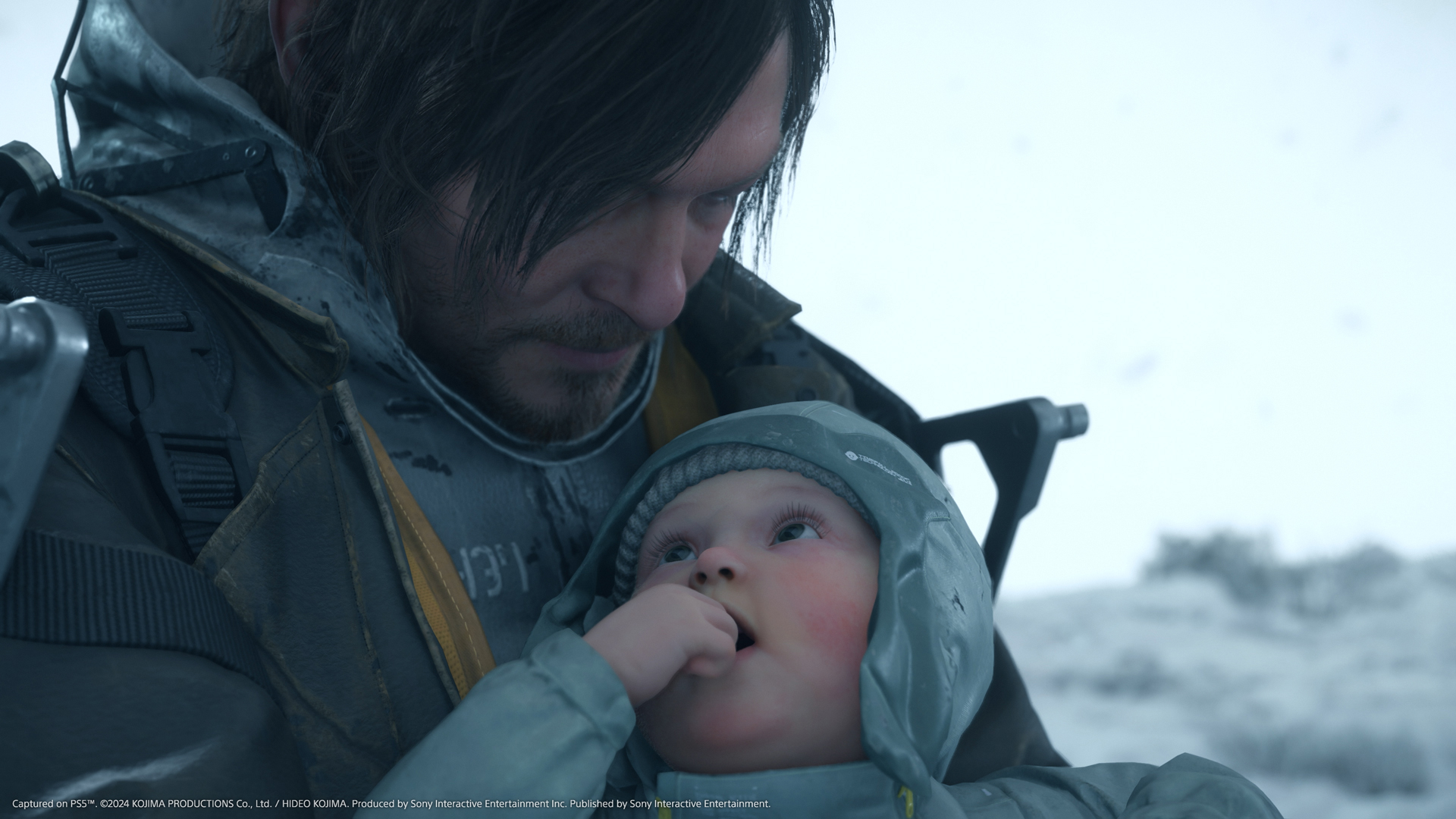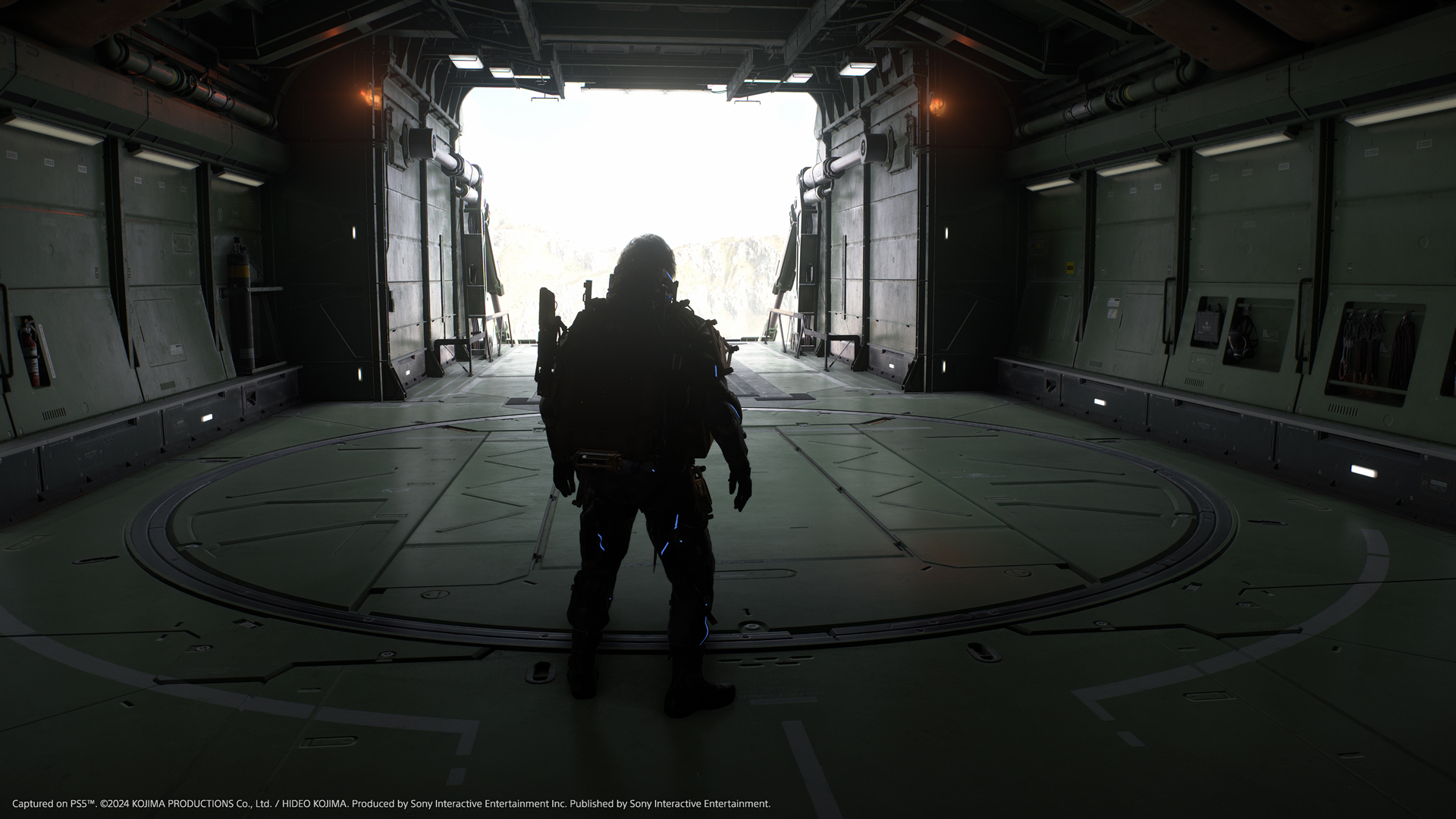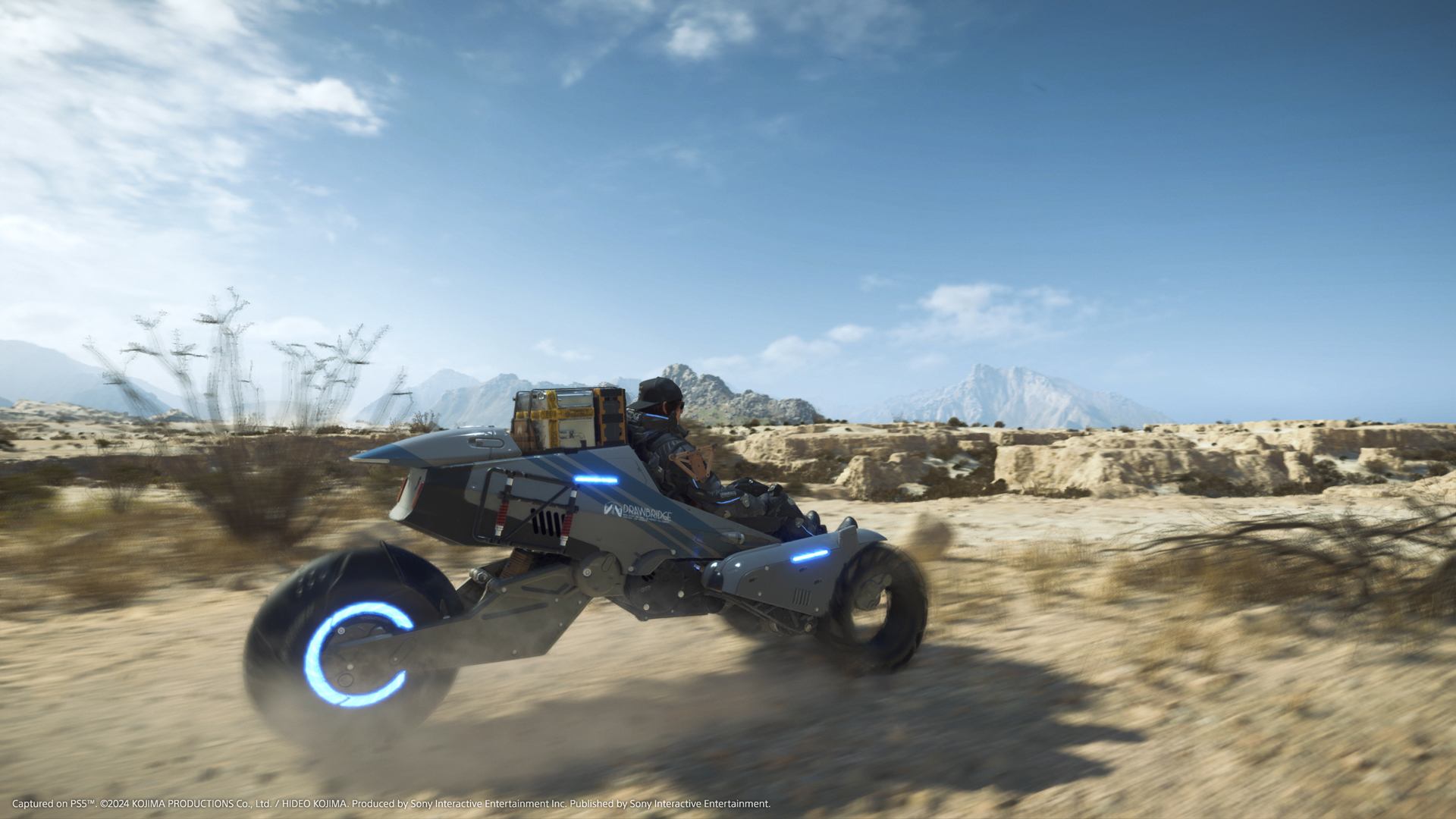What a 64-year-old movie can tell us about Death Stranding 2: On the Beach
Here's what you need to know about one of Hideo Kojima's favorite movies

Yes, the name of the game really is going to be Death Stranding 2: On the Beach. Obviously, that subtitle is an allusion to the literal Beach that appears throughout the first game as a sort of limbo between the worlds of the living and the dead, but that's not the only reference here. Given director Hideo Kojima's love of film - and equal love of sticking not-so-subtle movie nods into his games - it's impossible to ignore the connection to the 1959 Hollywood classic On the Beach.
One thing's for sure: Kojima is a big fan of On the Beach. He tweeted about the film multiple times in 2023, saying "I also love the original story by Nevil Shute. I also love the movie On the Beach directed by Stanley Kramer." He also tweeted a few images of the film's Japanese Blu-ray release, saying "tonight, I’ll rewatch my favorite."
Kojima tweets about a lot of movies, so those On the Beach references didn't seem like anything too notable for fans of the director's games. That is, of course, until the world learned that Death Stranding 2 would carry that name as its subtitle. So what is this film all about, and how might it connect to the story of Death Stranding 2?
On the Beach

Content warning: On the Beach includes several scenes involving suicide, and this article will reference those scenes.
On the Beach is a 1959 adaptation of a 1957 novel, and the historical context of that time is important to understand the film. This was the height of the Cold War, where the US and USSR were building stockpiles of nuclear weapons that could destroy the world as we knew it multiple times over, with the hope that both sides would be too frightened of the repercussions to ever actually use those weapons. These days, that idea forms the kitschy backstory of often satirical post-apocalyptic settings like Fallout, but in the late '50s the fear that the world could end at the press of a button was very real and present.
Director Stanley Kramer is known largely for work that dealt seriously with social issues of the time. Arguably his most famous movie, Guess Who's Coming to Dinner, positively depicted interracial marriage at a time when it was only just being made legal in many US states. But the film On the Beach very deliberately avoids discussing the politics of the situation, only briefly stopping to speculate that you could attribute the apocalypse to some frightened person making a snap decision while staring at a radar screen, instead focusing on how the survivors of nuclear war spend their final months on Earth.
The film is set primarily in Melbourne, Australia, which was largely spared from any direct destruction in the nuclear war. But by the time the story opens, it's becoming increasingly clear that even the survivors' days are numbered, as radioactive dust carried by air currents is expected to start washing over Australia in just a few months. There are two bits of hope left. One is a scientific theory that suggests radiation levels in the Northern Hemisphere could be falling faster than expected, meaning the nuclear cloud might disperse before completely blanketing the planet. The other is a mysterious morse code message being received from somewhere on the west coast of the United States.
Weekly digests, tales from the communities you love, and more
A submarine mission to measure the radiation levels far to the north and investigate that mystery signal forms the central thrust of the film, and it's here that we've got the most obvious connection to what we've seen of Death Stranding 2 so far. Much of the movie focuses on a submarine crew's efforts to find out if unknown pockets of humanity might be out there after the apocalypse, or if there's hope for anyone to survive. Based on the PlayStation State of Play trailer for Death Stranding 2, it seems that Sam, Fragile, and the rest of the crew aboard the DHV Magellan are basically pursuing that same goal - seeing if there's anyone else to connect with outside the ruins of America. The plot description on the official website even mentions that they're "on a new journey to save humanity from extinction."
Should we have connected?

In the movie, the mission to save humanity is ultimately doomed. The submarine makes it to Alaska and the crew discovers that the radiation isn't dispersing - it remains deadly and will continue to coat the Earth. The morse code message is tracked to a refinery around San Diego, but there are no survivors there - the code was being tapped out by a half-empty Coke bottle, bouncing randomly against a transmission device in an ocean breeze.
True to life, the movie sets up radiation sickness as a slow, painful death, and once it becomes clear there's no hope for survival, the government issues what are euphemistically referred to as 'sleeping pills' to those who wish to die peacefully. The film's final moments follow a handful of central characters in how they choose to end their lives. Some take the pills, others set out for their homelands in hopes of dying in a familiar place, and still others find more symbolic deaths.
Could the central mission of Death Stranding 2 end up going that grim? For all its somber moments and dark pieces of surrealism, the original game ended up being almost achingly optimistic about the power of human connection. It seems clear from what we've seen so far that the sequel is taking a much darker tone, explicitly posing questions with taglines like "should we have connected?" There's also a telling moment in the new trailer where Higgs chastises Sam for trading in his typical tools of connection for a gun, indicating that even our protagonists might be struggling with that whole idea of connecting the world.

Still, it's tough to imagine Death Stranding fully abandoning its largely hopeful themes, and it's tougher to imagine how a film as cynical as On the Beach might serve as a central inspiration for the sequel. But after having seen the movie for myself, I'm not sure it actually is all that cynical. It's sad, yes - I mean, literally the entire human race dies in the end - but much of the film's final hour is defined by instances where characters are able to find meaning in their final moments by building connections with the people around them. In the days before humanity's extinction, we see characters moving past the trauma of the war, rebuilding damaged relationships and forging new ones. That theme of connection certainly ties into the ideas presented in Death Stranding.
There's a distinct difference in how On the Beach lands when you watch the film rather than just read a plot summary, but unfortunately, plot summary is how the vast majority of curious Death Stranding fans are going to experience it. The film isn't available on any current streaming or digital rental service that I've been able to find, and even DVD and Blu-ray copies seem to be long since out of print. That's a shame, because even beyond the connection to a modern blockbuster video game, it's still a movie that hits hard 64 years after release.

Dustin Bailey joined the GamesRadar team as a Staff Writer in May 2022, and is currently based in Missouri. He's been covering games (with occasional dalliances in the worlds of anime and pro wrestling) since 2015, first as a freelancer, then as a news writer at PCGamesN for nearly five years. His love for games was sparked somewhere between Metal Gear Solid 2 and Knights of the Old Republic, and these days you can usually find him splitting his entertainment time between retro gaming, the latest big action-adventure title, or a long haul in American Truck Simulator.


